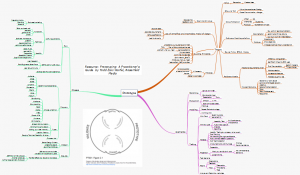Next weeks Business901 podcast is Vivian Hairston Blade. Vivian is the Founder, President & CEO of Experts in Growth Leadership Consulting, LLC (EiGL Consulting, LLC) based in Louisville, KY. EiGL Consulting focus their energies on helping develop an effective strategy to create customer value. Through a combination of coaching and training, they help you put that strategy into place through change management strategies that create committed leadership and organizational discipline.
I gave the Vivian the perfect opportunity to promote herself in the podcast and instead she continued coaching and adding value:
Joe: What are your plans going forward?
Vivian: Well, our plan is to continue to build on this idea of people and process and that cohesiveness between the two that help companies drive growth. As you look at the environment, the marketplace, the economy, and how it changes and how it will change in the future and how we'll need to still continue to be conservative in so many ways especially when it comes to money and finances and investments, to realize that people investment is important, that operational process investment is important as it relates to customer focus and serving customer needs.
Helping companies realize that without that connection and that understanding of why you exist and how to operationally serve the why you exist, what your value is in this customer relationship, without this you won't have a business for very long.
You know, it's unfortunate that we see so many of these companies in today's economy who have been icons in the American industry, your Kodak and your Hostess, Hewlett Packard, so many, even Netflix recently who decided to change both their service and their pricing policy and lost millions of customers. They made a 360 degree turn. And, just in the Wall Street Journal in the past few days there was an article about how they are beginning to now recover their customers.
But, without that skill of listening that we just talked about a minute ago, you haven't a clue what the impact is going to be when you make some of those changes, or do you even really care it's almost too late? So, we're helping companies to have a good ear to the ground on that customer connection and building an environment where employees can thrive toward reaching their career goals and helping the company to achieve it's goals.
Related Information:
Lean Canvas for Lean EDCA-PDCA-SDCA
Lean Engagement Team Book Released
Side Effects of our Desires and Abilities to Empathize
Connecting Continuous Improvement and Appreciative Inquiry



